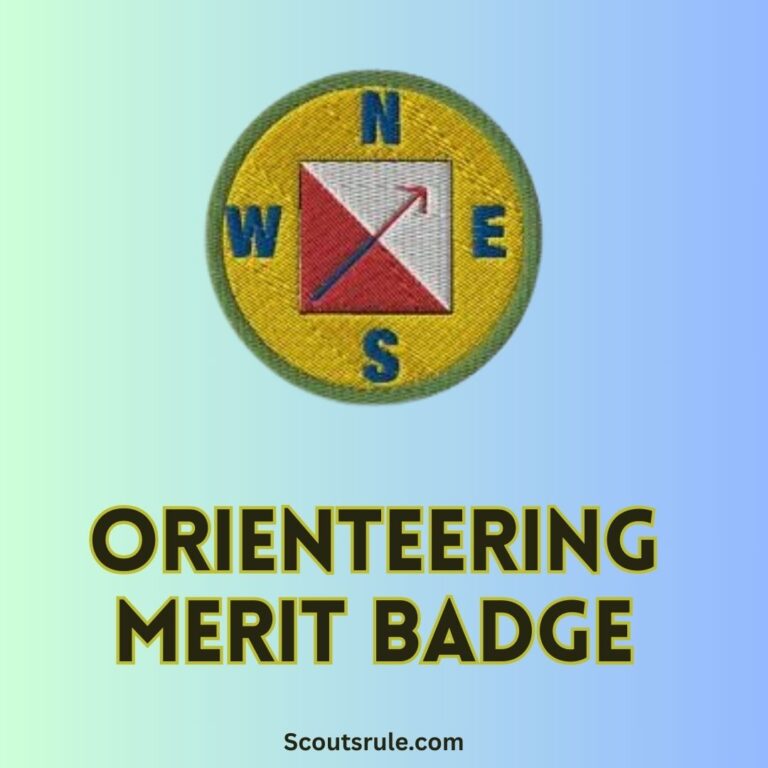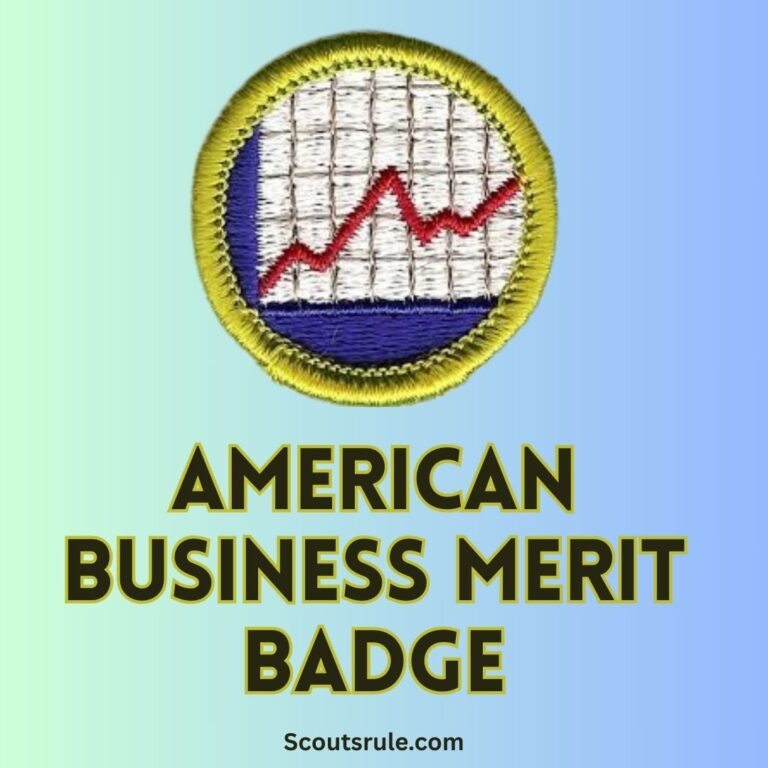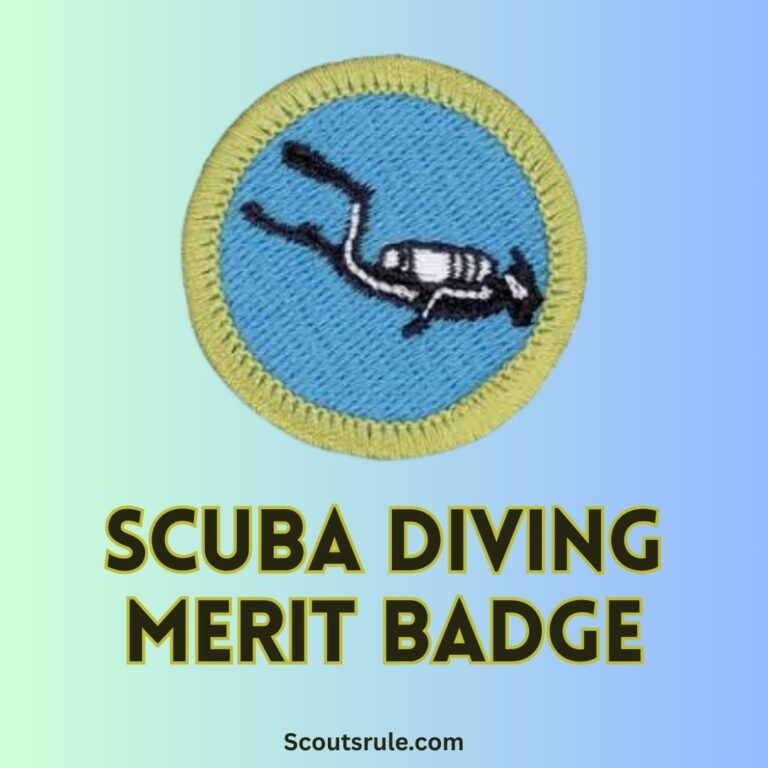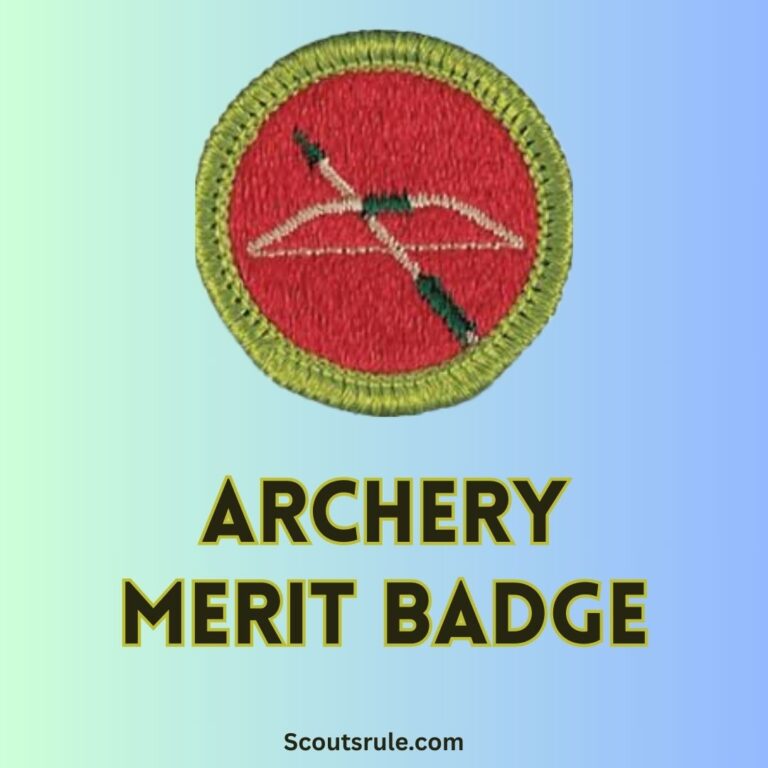
Scuba diving, rock climbing, and many other merit badges challenge you to push your limits and develop specialized skills. The Small Boat Sailing Merit Badge, however, opens a window to an exciting world where teamwork meets technical know-how, and where a historical tradition of seamanship blends with modern safety standards. In this merit badge, you will learn not only how to operate and navigate a small sailing vessel but also how to uphold strict safety protocols, adhere to maritime laws, appreciate the environmental impact of sailing, and demonstrate leadership and teamwork on the water.
In today’s guide, we will explore in detail the tasks required by the badge—including pre-departure planning and boat inspection, mastering various points of sail, safely executing maneuvers like tacking and jibing, and understanding the underlying principles that ensure your safety and that of your crew. Whether you’re a novice who has only dipped your toes into the art of sailing or someone with experience on the water, the comprehensive requirements for this badge will take your knowledge to the next level.
Post Contents
- 2. Overview of the Small Boat Sailing Merit Badge
- 3. Prerequisites and Preliminary Requirements
- 4. Safety Afloat: Hazards, First Aid, and PPE
- 5. The BSA Safety Afloat Plan and Pre-Departure Briefing
- 6. The Swimmer Test Requirement
- 7. Boat Familiarization and Description
- 8. Pre-Departure Planning: Float Plans, Gear, and Environmental Considerations
- 9. Understanding Wind, Weather, and Navigation Rules
- 10. On-Water Sailing Skills: Setting Sails, Maneuvering, and Helm Control
- 11. Buddy System and Teamwork in Sailing
- Final Thoughts and Future Opportunities
2. Overview of the Small Boat Sailing Merit Badge
The Small Boat Sailing Merit Badge is designed to:
- Educate Scouts on boat handling and navigation: You will learn to identify major parts of a small sailing boat, understand the functions of various components (e.g., hull, mast, rudder, sails), and discuss how these parts work together for efficient sailing.
- Emphasize diver (sailor) safety: From planning your outing to executing safe maneuvers, you will study and adhere to the BSA’s Safety Afloat Plan as well as recommended practices for on-water safety.
- Develop practical sailing skills: The badge includes preparing a boat for sailing, setting a course that covers the basic points of sail (running, beating, reaching), and demonstrating proper helmsmanship through exercises such as tacking, jibing, and safely “getting out of irons.”
- Instill environmental respect: You will also learn the importance of preserving the marine or lake environment where you’re sailing, including proper waste disposal and techniques to minimize damage to aquatic habitats.
The overarching goal is to provide you with a deep understanding of small-boat sailing that goes well beyond learning to handle a boat—it is about internalizing a culture of safety, responsibility, and active enjoyment of water sports.
3. Prerequisites and Preliminary Requirements
Before beginning the Small Boat Sailing Merit Badge requirements, you must meet certain prerequisites. First and foremost, you are expected to have a basic swimming proficiency and, in some councils, have earned the Swimming Merit Badge. Comfort in the water is essential because the performance in sailing is heavily influenced by your ability to swim and manage water conditions.
Additional preliminary guidelines may include:
- Familiarity with water safety rules and rescue techniques.
- Basic knowledge of maritime slang and simple lateral navigation.
- An introductory awareness of weather patterns, which can be reinforced by recent experiences in other aquatic merit badges.
It is advisable to review any local council recommendations to ensure that all prerequisites are met before you attempt the diving and on-water components of the badge.
4. Safety Afloat: Hazards, First Aid, and PPE
Safety is the cornerstone of any aquatic activity, and small boat sailing is no exception. The first requirement calls for identifying potential hazards you may encounter while boating. This involves a thorough discussion of both common and specific risks, including:
- Weather and Wind Conditions: Strong winds, sudden changes in weather, and deteriorating water conditions can create dangerous situations. Recognize the warning signs and know how to respond.
- Boat-Related Hazards: Issues such as capsizing, flooding of the cockpit, or equipment failure (e.g., rigging or engine problems if applicable) must be anticipated and clearly understood.
- Personal Hazards: Consider personal injuries like sunburn, dehydration, or cold-water shock, all of which are common when spending extended periods on the water.
To address these hazards, you must be familiar with first aid treatments including:
- Treatment of Blisters and Cuts: Knowing how to properly care for minor scrapes or contact wounds.
- Recognition and Management of Hypothermia or Heat-Related Illnesses: Identifying symptoms early and responding effectively.
- Emergency Signaling: Understanding how to use signaling devices (flares, whistles, or radios) and setting up a pre-arranged plan to notify emergency services if needed.
Personal Protective Equipment (PPE) is integral. Some recommended gear includes:
- Lifejackets and Personal Flotation Devices (PFDs): Worn at all times when on or near the water.
- Appropriate Clothing: For warm weather, light and breathable fabrics; for cool weather, waterproof and insulated gear should be worn.
- Hat and Sunglasses: These protect against sunburn and glare off the water surface.
- Non-Slip Footwear: To ensure safe movement on a potentially wet deck.
Discuss these safety measures with your counselor and explain how you will incorporate them into your sailing routine.
5. The BSA Safety Afloat Plan and Pre-Departure Briefing
Before any small boat sailing activity, it is imperative to review and understand the BSA Safety Afloat Plan. This comprehensive plan outlines a set of guidelines intended to protect Scouts while they are on the water. The plan typically includes:
- Pre-Dive (or Pre-Sail) Safety Check:
A checklist of actions to be completed before departing the dock. This includes verifying that all life-saving equipment is onboard, ensuring the boat has been checked thoroughly for defects, and confirming that communication devices are working. - 9-Point Safety Briefing:
This briefing covers topics such as identifying hazards, understanding navigation rules, wearing proper gear, and establishing communication signals with your buddy. You should be prepared to discuss each point in detail with your counselor. - Float Plan Preparation:
The float plan serves as a detailed record of your intended sailing area, departure time, expected return time, and contact information for someone who will monitor your progress. It is a critical safety component ensuring that someone on land will know if something goes wrong.
Your counselor may require you to present and discuss these plans as a check to ensure you understand every step before setting sail.
6. The Swimmer Test Requirement
Before attempting on-water sailing activities, you must pass a BSA swimmer test. This test is a fundamental prerequisite that ensures you have adequate swimming skills and confidence when handling unexpected situations in the water. The typical swimmer test includes:
- Diving into Water:
Jumping feet-first into the water over your head in sufficient depth. - Swim Distance:
Completing a 75-yard swim in a strong, continuous manner using a recognized stroke such as sidestroke, breaststroke, trudgen, or crawl. - Resting Backstroke:
Following the initial swim, completing an additional 25 yards using an easy backstroke while resting. - Continuous Performance:
The entire 100 yards must be completed in one continuous swim, with at least one sharp turn en route. After finishing, you should demonstrate the ability to recover by simply floating.
This test verifies your endurance, strength, and safety in the water. Make sure you have practiced these skills frequently before the official test, as they are essential to your overall safety in both swimming and sailing.
7. Boat Familiarization and Description
A key component of the Small Boat Sailing Merit Badge is your ability to accurately identify and describe the boat you will be using. Before embarking on your sailing activities, you must:
- Describe Major Boat Parts:
Identify and explain the functions of each major component of the boat. These typically include: - Hull: The main body of the boat that provides buoyancy and stability.
- Deck: The upper surface where crew members stand and work.
- Mast: The vertical post that supports the sails.
- Boom: The horizontal spar attached to the mast where the bottom of the sail is secured.
- Rudder: The flat piece located at the stern that is used to steer the boat.
- Centerboard or Keel: The underwater fin that helps maintain directional stability and counterbalance the wind’s force on the sails.
- Sails: Explain the roles of the mainsail and jib (if applicable) in providing propulsion.
- Discuss Boat Capabilities:
According to BSA guidelines, your boat should be smaller than 20 feet, be capsizable, and have the capability of sailing to windward. Demonstrating that you understand these limitations helps ensure both your safety and competence in handling the boat.
Your counselor will expect a detailed explanation of the boat’s design, with an emphasis on how each component contributes to safe and efficient sailing.
8. Pre-Departure Planning: Float Plans, Gear, and Environmental Considerations
Before you go afloat, careful planning is essential. This requirement encompasses several elements:
Float Plans and Communication
- Float Plan:
Create a written plan that outlines your intended sailing course, departure and return times, the locations where you plan to sail, and the names of all persons on board. This plan is a lifeline in emergencies, as it ensures that someone on land is aware of your whereabouts. - Communication Devices:
Ensure that you have reliable methods of communicating with shore-based personnel. This might include marine radios, cell phones in waterproof cases, or other alert systems.
Appropriate Clothing and Gear
- Warm vs. Cool Weather Gear:
Explain how required clothing and personal gear change with weather conditions. For warm weather, choose lightweight, breathable fabrics that protect from the sun, and for cooler weather, opt for waterproof, insulated clothing. - Footwear:
Non-slip, durable footwear is essential for maintaining traction on a wet deck. - Sun Protection:
Use sunscreen, hats, and polarized sunglasses to protect against harmful UV rays.
Environmental Considerations
- Minimal Impact:
Discuss methods for ensuring that your sailing outing has a minimal environmental impact. This includes proper waste management, avoiding sensitive marine habitats, and following designated routes to prevent damage to ecosystems. - Weather and Tide Information:
Part of pre-sailing planning is checking local marine forecasts, tide tables, and wind conditions. This data is critical for planning a safe and enjoyable trip.
Document these planning strategies in a journal or logbook, as they will form a significant part of your discussions with your counselor.
Before setting sail, you must be able to confidently explain how wind direction and weather conditions affect both performance and safety. Your responsibilities include:
- Identifying Wind Direction:
Learn to use natural indicators (such as flags, waves, or even smoke, if available) to determine the wind’s direction. Explain why this knowledge is important for setting a sail plan. - Weather Conditions:
Discuss how changes in weather can affect sailing—the arrival of a storm, sudden shifts in wind speed, or changes in wave patterns. Understanding these phenomena is crucial to adapting your course and ensuring that you have enough time to return to safety before conditions worsen. - Navigation Rules:
Briefly discuss the “rules of the road” as they apply to small boats. This includes the need to yield to larger vessels, maintaining a proper lookout, and being aware of local maritime regulations that govern boat traffic and conduct near marinas or busy waterways.
10. On-Water Sailing Skills: Setting Sails, Maneuvering, and Helm Control
The heart of the Small Boat Sailing Merit Badge is the demonstration of practical sailing skills while on the water. According to the requirements, you and your buddy must:
- Prepare the Boat for Sailing:
Conduct a complete safety inspection using your float plan and checklist. Verify that all equipment—sails, rigging, lifejackets, and communication devices—is functional. - Set Sails for a Complete Course:
Execute a round-trip course approved by your counselor that encompasses the principal points of sail: - Running: Sailing with the wind coming from directly behind.
- Beating: Sailing upwind by tacking back and forth.
- Reaching: Sailing with the wind coming partially from the side.
- Helmsmanship:
Demonstrate good helm control. This involves smoothly steering, maintaining stable speed and course, and adjusting for changing wind conditions. - Maneuvering Techniques:
Practice tacking (turning the bow through the wind), jibing (turning with the wind so the sail crosses from one side of the boat to the other), and “getting out of irons” (freeing a boat that is stuck facing directly into the wind). - Safety Position:
You must also demonstrate the safety position as required by the BSA Safety Afloat plan. This is a predetermined location for emergencies ensuring that the boat remains stable and that crew members are ready to respond if necessary.
Document your performance during these exercises and be ready to explain what techniques were used, why they are necessary, and how they contribute to safe boat handling.
11. Buddy System and Teamwork in Sailing
Scuba diving alone is never recommended—and the same safe principles apply to small boat sailing. The buddy system is fundamental. You must:
- Plan the Outing with a Buddy:
Discuss with your counselor how you and your buddy will coordinate during the sailing activity. Talk about mutual responsibilities, such as sharing navigation duties, performing equipment checks for one another, and supporting each other in challenges. - Practice Synchronized Maneuvers:
Whether it’s coordinating a tandem tacking maneuver or assisting in boat recovery, teamwork is vital for ensuring safety during emergencies or unexpected conditions. - Buddy Check:
Use established protocols (often an acronym or checklist) to verify that each partner’s gear is functioning and that both are aware of their roles, similar to the pre-dive checks used in other aquatic activities.
Emphasize through discussion and demonstration that sailing under the buddy system enhances safety, builds trust, and leads to more enjoyable, coordinated outings.
Final Thoughts and Future Opportunities
The Small Boat Sailing Merit Badge is much more than a test of boat handling—it is a comprehensive program that fosters a deeper understanding of water safety, environmental stewardship, and teamwork. By fulfilling the requirements, you not only develop the technical skills and confidence needed to sail a small boat but also learn how to responsibly plan outings, respect maritime regulations, and appreciate the natural water environment.
As you progress through the badge’s requirements, consider the broader implications:
- Personal Growth: Mastering small boat sailing enhances your physical coordination, decision-making, and leadership qualities.
- Future Ventures: The skills you learn can serve as a gateway to other water-related activities, including larger sail training, competitive sailing, and even careers in maritime fields.
- Environmental Awareness: A respectful attitude toward nature and responsible usage of aquatic resources is a mindset that will serve you well throughout life.
Embrace every lesson, review every checklist meticulously, and enjoy the unique thrill that comes with splitting open waters with a well-prepared crew and a keen appreciation for the art and science of sailing.

Hi, Robin here, A former lead Scout and here I share my inspiring stories about USA Scouts, leadership, adventure, how to guides and more.






